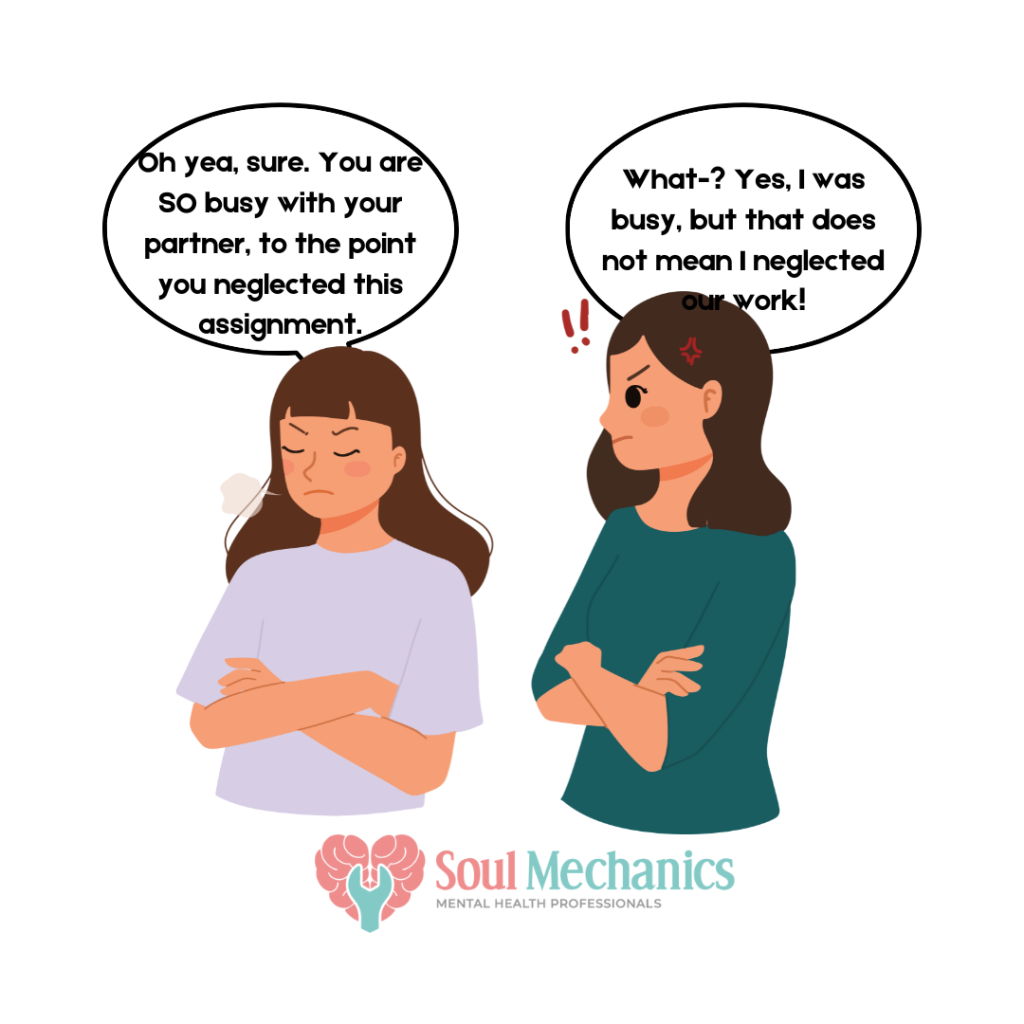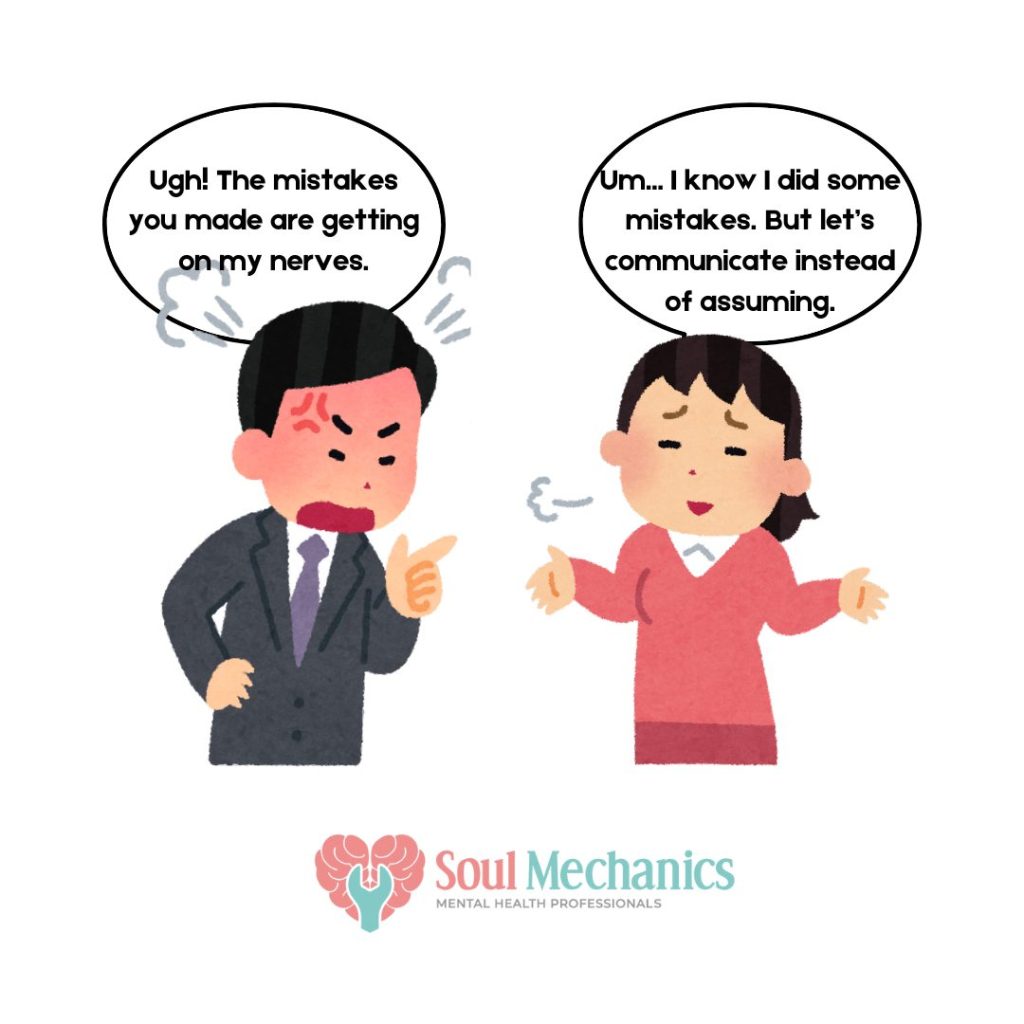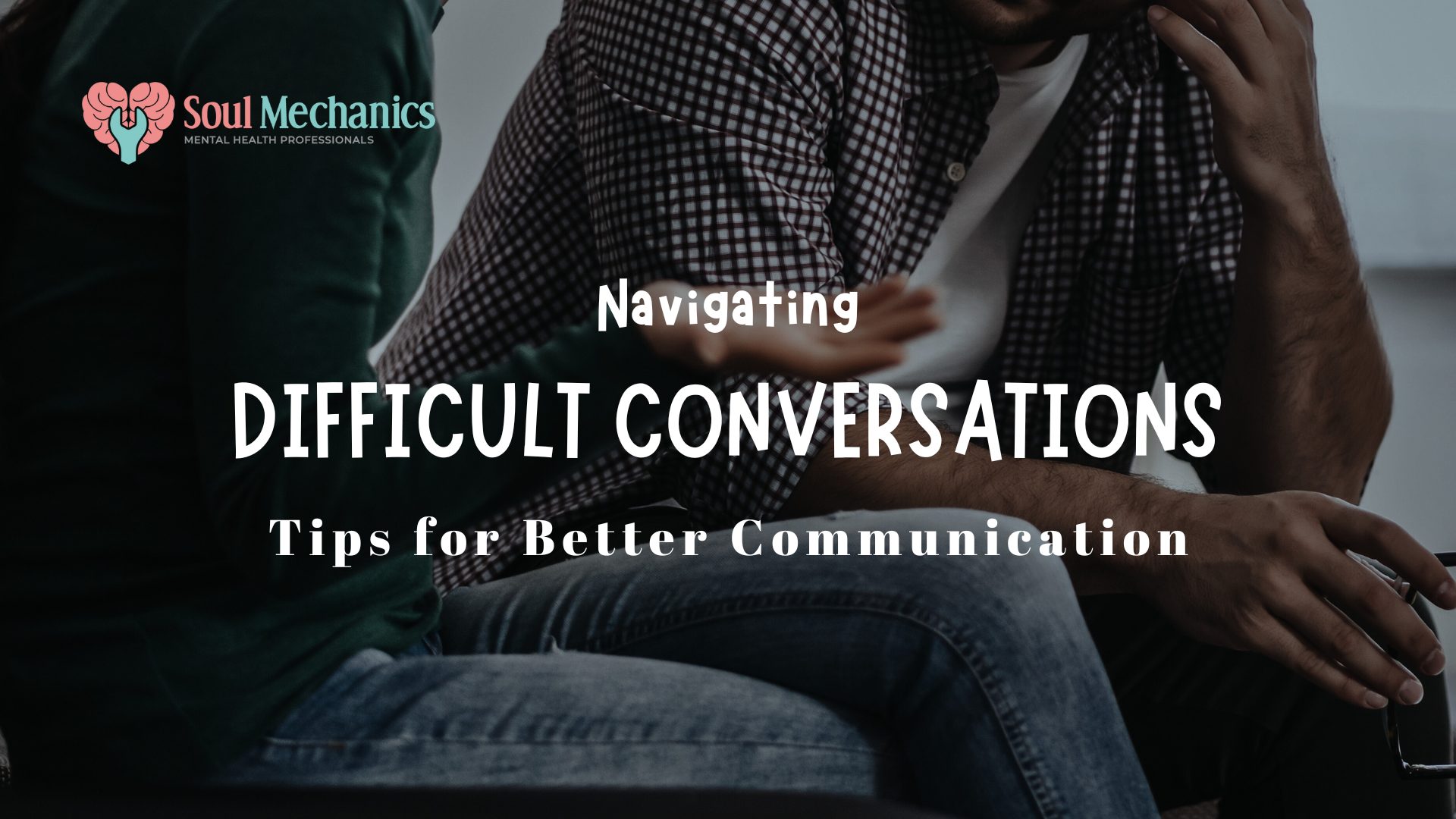Communicating Better: Navigating Difficult Conversations
Communicating Better: Navigating Difficult Conversations
Written By: Rose Mardiah Mazlan (Content Moderator)

Verified By: Shaundtrya Ganasan, Licensed Counselor (KB11097)
“Communication is the key”!

In many different situations, you hear about this all the time. But, how often do you uncover the doors to real understanding? Think about it, have you ever felt that you tried your best to communicate with another party, but they still misunderstood your words? You felt like the gap of understanding was getting wider instead of focusing on the issue. Or does the solution feel miles away even after spilling your heart out?
Communication isn’t just about talking about each other; it’s about putting your thoughts in the right way. Let’s explore how to navigate tough conversations and make communication more effective.
Why Communication Needs to Be Done Right?
Effective communication is beyond just sharing words. What matters is, that you can reach an understanding and the common ground. When communication is delivered effectively, it can:
Build trust and empathy in relationships
When both parties calmly talk about your shortcomings, you can be more vulnerable towards each other. Not only this is important for personal conversations, but vulnerabilities are also vital for professional settings. Imagine you and your coworkers are both bottling up your frustration about your performance, you will struggle to reach an understanding since you can’t comprehend the struggle you both are facing, hence creating weaker trust.

Resolve conflicts efficiently
With the right communication, both parties understand each other’s perspectives when you talk about your thoughts honestly. After all, a different perspective is the root cause of most conflicts.
Prevent misunderstandings that can worsen the issues

When you and someone else communicate effectively, you can become more transparent with each other. Being honest with each other will help to avoid self-assumptions, speculations, toxic silent treatment, and so on.
However, when done poorly, even the simplest conversations can lead to frustration, arguments, or unresolved issues. For instance, trying to address a partner’s late-night habits with an accusatory tone might make them defensive, while starting with a calm observation can open the door to a more productive discussion.
Example:
Ineffective Approach: “You never care about my feelings; you’re always out late!”
Effective Approach: “I noticed you’ve been coming home late recently, and I’d like to talk about how that’s been making me feel.”
The Importance of Effective Communication
To initiate good communication is not only about expressing your thoughts. While it is irresistible to make sure the other person understands what you are going through, you also need to respect their perspective. The process is more than just ‘talk it out’. You will need to learn these aspects:
Clarifying First
While talking about your side of the story, use simple and direct language. You must refrain from speaking in double meaning or beat around the bush to expect them to understand your guessing games. You should be clear about what’s happening. For instance, instead of saying “I wish someone would just help me with this task”, just say “I need your help with this…”. Clarify your understanding by repeating and rephrasing what they said. Ask them if what you understand is right, and contribute your perspective as well.

Active Listening
After talking about your thoughts, listen to their response. Or, if it is their turn to speak, listen to them carefully. Listening is not just about hearing their sentences blindly, you need to genuinely hear their words without jumping or interrupting their words. You should also refrain from responding immediately while they are talking. Make eye contact with them while focusing on their sentences one by one. By doing this, you will be able to grasp the details.
Be Empathetic

You have finally listened to their whole story, so what’s next? You can practice showing that you understand and care about their feelings and perspectives. Be kind to their opinions and thoughts. Acknowledge their struggles and put aside any personal resentment you have at that time. Both of you deserve to be heard without judgment. So, don’t bring in your one-sided opinion during this moment.
Example:
When addressing a team member at work who missed a deadline, instead of saying, “Why didn’t you finish on time?” try:
“I understand you’ve been juggling a lot lately. Can you share what challenges you faced with this project so we can work through them together?”
How Communication Can Go Wrong?
Not every attempt at communication will sail smoothly. At times, the best intentions can fail if communication goes down the drain. Here are common pitfalls:
Lack of Clarity
While discussing, someone could speak vaguely or assume that they know what you mean. Directing the words into a different meaning will make you feel misunderstood and unable to reach the actual point. You will run in a circle of confusion instead of reaching the middle ground. If you or someone else keeps beating around the bush, the communication becomes unclear and leads to frustration.

Interrupting
When you or someone cuts the conversation, it shows a lack of respect as you are not recognising their part of the communication. Instead of feeling calm, you get irritated and it shakes off your mind from your train of thought. The interruption will just ignite the flame between you.

Focusing on Winning
Communication will also get spoiled if someone treats the conversation as a competition instead of a collaborative effort. The purpose of communicating is not about agreeing or disagreeing with another party. Conversing about your opinion can be complex, so you need to accept if they are thinking in another way or if your ideas do not match. There is no need to prove who is right. Flaws can be overwhelming when both parties refuse to acknowledge the discomforting truth between you.
Letting Emotions Take Over
While talking, your emotions might rise, heating the conversation. While it is natural to express your emotions while talking, being too emotional will disrupt parts of your rationality. Intense emotion will come first before the actual conversations, it can cloud your judgment and make the conversation unproductive. So, it’s advisable to cool down yourself first before initiating a deep conversation.
Example:
During a disagreement, saying, “That’s not what happened!” in a heated tone may escalate the argument. Instead, try:
“I remember the situation differently—can we go over what happened to clarify?”
Types of Ineffective Communication
Recognizing bad communication habits is the first step toward improvement. Common types include:
Aggressive Communication
Communication will turn sour when you use a disrespectful word, being loud, forceful, or confrontational. This type of communication will become an argument, making you defensive and shutting down their dialogue. The purpose of the discussion will also be pushed to the edge without any clear resolution.
Example: “You’re so irresponsible for not answering my calls!”
Passive-Aggressive Communication
You use sarcasm or indirect remarks. Instead of being honest about your feelings, you resort to spinning your words around because you expect them to receive the hint. Or you have been used to expressing your feelings without having to hurt someone else directly. However, doing this will just confuse the other person and avoid addressing the root problem.
Example: “Wow, must be nice to ignore deadlines and still be okay with it.”

Passive Communication
You brush off the issue altogether to maintain the current peace and comfort. You might hold back yourself because you are afraid of the circumstances. You might not want to experience argument or disagreement causing you to back off and hesitate. As a result, you leave the issues hanging and harvest resentment.
Example: “It’s fine, don’t worry about it,” even when it’s not fine.
Assumptive Communication
Acting on assumptions rather than facts. When you do this, you will dismiss their side of the story or their struggle just because your opinion has blinded you. This will cause unfairness in the conversation, causing unnecessary conflict. Most of the time, assumptions are inaccurate and exaggerated.
Example: “I know you’re late because you don’t care.”
How to Communicate Effectively?
Here are actionable tips for navigating challenging conversations:
Prepare Yourself
Before talking to someone, you should calm down and be introspective. Take time to reflect on what you want to say and why. This will keep your conversation on focus and avoid veering off track.
Example: Before discussing a missed deadline, outline your concerns:
“I want to understand what caused the delay and how we can prevent it next time.”

Choose the Right Time and Place
The timing and environment will affect your mood and indirectly involve your ability to deliver your thoughts. Sensitive topics need the right environment for a productive discussion, creating a safe space for honesty and transparency.
Example: Instead of confronting a friend in a group setting, wait until you’re in a private, relaxed setting.
Start with Empathy
Empathy softens the tone and opens the other person up to your perspective. This will make the other person feel safe to show their vulnerabilities. Empathy will also encourage you to gain more insight into the issues instead of dwelling on the past.
Example: Instead of “You’re always forgetting things,” try:
“I understand that you’ve been under a lot of stress. Can we figure out how to manage this better together?”

Practice Active Listening
Listening is just as important as speaking. Avoid interrupting, and show you’re paying attention by rephrasing their words like:
“I hear you saying that…” or “It sounds like you’re feeling…” Your body language also plays a role. Make sure to make proper eye contact, sit comfortably, and respond to their words. You may also nod your head to indicate that you are paying attention to their story.
Example:
If your partner says, “I feel like you don’t have time for me,” you can respond:
“You’re feeling neglected because I’ve been working late. Is that right?”

Stay Calm and Composed
Emotions can derail a conversation, taking over your rationality and thoughts. Take deep breaths and keep your tone steady. Observe your body language, and identify if there are any changes.
Example: If someone raises their voice, respond calmly:
“I want to continue this conversation, but we need to keep it respectful.”
Ask Clarifying Questions
Avoid making assumptions by asking questions. Probe them with something you lack information about. You can’t read anyone’s mind, so carefully assessing their story will give you a deeper insight.
Example: “When you say you’re upset about the meeting, can you explain what specifically bothered you?”
Summarize and Reflect
Restate what you’ve heard to ensure clarity. This will help you to focus on the issue, helping each other to detect any misunderstanding or misinterpretation about someone else’s speech.
Example: “So, what I hear you saying is that the tight deadline felt unmanageable. Is that correct?”

End with a Plan
Wrap up by agreeing on actionable next steps. Your conversation will not just end here. Bring forward the issues you have heard from each other and make some progress on it. Come up with the solutions you can do to address the root concern. Importantly, you can remind each other constantly since this will be the beginning of the new change.
Example: After resolving a conflict about household chores, conclude with:
“Let’s try dividing the tasks evenly and check in after a week to see how it’s going.”
Closing Thoughts

Communication isn’t just about exchanging words—it’s about connecting, understanding, and solving problems together. By practising empathy, clarity, and respect, you can transform difficult conversations into meaningful opportunities for growth. Two-way communication is essential, in which both parties are active in giving and taking. Bear in mind, that setting a new pace will require some time. You can start small, and be patient and consistent. Importantly, communication is a skill that can be cultivated with practice. That’s why learning about this skill is worthy and rewarding in the long run.
If you’re looking for a therapist in Kota Damansara or Ipoh area, you can click here for more information.
If you enjoyed reading this, why not broaden the horizon of knowledge by learning about "Doomscrolling: What It Is and How to Break the Habit"? You can read the blog here.
For more content related to mental health do follow us on our official Instagram.


